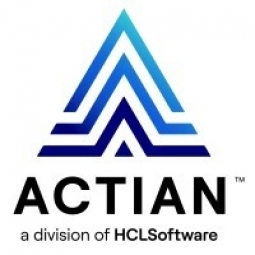公司规模
Mid-size Company
国家
- Australia
产品
- Amazon EC2
- Ingres database
- JBoss
- JBPM
- DROOLS
技术栈
- Amazon EC2
- Ingres database
- JBoss
- JBPM
- DROOLS
实施规模
- Enterprise-wide Deployment
影响指标
- Cost Savings
- Productivity Improvements
- Customer Satisfaction
技术
- 基础设施即服务 (IaaS) - 云计算
- 应用基础设施与中间件 - 数据库管理和存储
适用功能
- 物流运输
- 销售与市场营销
用例
- 供应链可见性(SCV)
- 库存管理
服务
- 云规划/设计/实施服务
- 软件设计与工程服务
关于客户
DAI Rubicon is a company that offers innovative solutions around print, distribution, and circulation management for the publishing industry. They are in a high volume, low margin business and pass on bulk discounts and have very complex pricing schedules for customers and partners. To enhance their ordering experience, they needed to find a better way for customers to manage their logistics for online purchases. They decided to add a point of sale supply chain delivery solution that would make the ordering process more transparent, scalable, and easier to manage without adding to the cost.
挑战
DAI Rubicon, a company that provides publishers with an end-to-end solution including print, distribution, and circulation management, was facing a challenge. They were in a high volume, low margin business and needed to find a better way for customers to manage their logistics for online purchases. They decided to add a point of sale supply chain delivery solution that would make the ordering process more transparent, scalable, and easier to manage without adding to the cost. They chose Base2Services, Australia’s leading open source cloud computing specialist, to build the supply chain delivery solution. They wanted a solution that was more scalable, more transparent, and easy to use, built on the Amazon EC2 cloud that would lower their ongoing operational costs.
解决方案
DAI Rubicon’s supply chain delivery solution makes ordering easier for customers. There is greater transparency in the process which means the customer has better visibility of where their order is. The supply chain delivery solution consolidated and automated DAI Rubicon’s online ordering processes. The solution was 100% open source including the Ingres database, JBoss, JBPM, and DROOLS. The solution was tested and deployed on the Amazon EC2 cloud. Using the EC2 cloud means customers only pay for what they use, and it can scale in a matter of minutes. This is important because before launch, you don’t know what the hit rate will be, and using the cloud provides the ability to scale depending on demand rather than paying for additional services not being used, or reaching capacity and not being able to cope.
运营影响
数量效益

Case Study missing?
Start adding your own!
Register with your work email and create a new case study profile for your business.
相关案例.

Case Study
Remote Temperature Monitoring of Perishable Goods Saves Money
RMONI was facing temperature monitoring challenges in a cold chain business. A cold chain must be established and maintained to ensure goods have been properly refrigerated during every step of the process, making temperature monitoring a critical business function. Manual registration practice can be very costly, labor intensive and prone to mistakes.

Case Study
Hospital Inventory Management
The hospital supply chain team is responsible for ensuring that the right medical supplies are readily available to clinicians when and where needed, and to do so in the most efficient manner possible. However, many of the systems and processes in use at the cancer center for supply chain management were not best suited to support these goals. Barcoding technology, a commonly used method for inventory management of medical supplies, is labor intensive, time consuming, does not provide real-time visibility into inventory levels and can be prone to error. Consequently, the lack of accurate and real-time visibility into inventory levels across multiple supply rooms in multiple hospital facilities creates additional inefficiency in the system causing over-ordering, hoarding, and wasted supplies. Other sources of waste and cost were also identified as candidates for improvement. Existing systems and processes did not provide adequate security for high-cost inventory within the hospital, which was another driver of cost. A lack of visibility into expiration dates for supplies resulted in supplies being wasted due to past expiry dates. Storage of supplies was also a key consideration given the location of the cancer center’s facilities in a dense urban setting, where space is always at a premium. In order to address the challenges outlined above, the hospital sought a solution that would provide real-time inventory information with high levels of accuracy, reduce the level of manual effort required and enable data driven decision making to ensure that the right supplies were readily available to clinicians in the right location at the right time.







